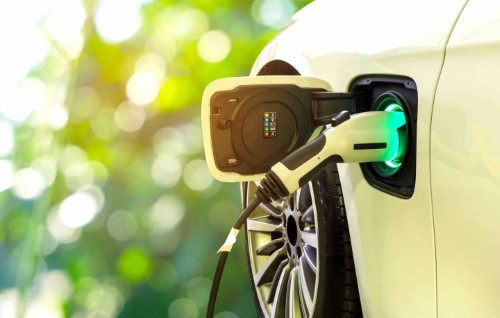
China continues it push on electromobility; EVs to account for 25% of annual new LCV sales in 2025

Under the plan, the ministry, which regulates the domestic auto industry, expects EVs to account for 25 percent of annual new light-vehicle sales in 2025, up from the 20 percent target it set in a similar plan in 2017.
The ministry expects EVs to account for 25% of annual new light-vehicle sales in 2025, up from the earlier target of 20%. The target would be a giant leap from the current share of electrified vehicles in China. In the first ten months of 2019, the share stood at 4.6 per cent. Beijing plans to wind down the subsidies for EVs by the end of 2020, which has been already cut by more than 60 per cent.
The Ministry of Industry and Information Technology planned some measures to achieve the EV target for 2025. It pledges to maintain a sales tax exemption and provide preferential financing and traffic management policies for EVs. It will also encourage provincial governments to support the use of electrified vehicles by public transport operators and new mobility service providers.
The most significant measure in the draft plan will be the efforts at “optimizing” the carbon credit program, under which, passenger vehicle makers must earn one carbon credit for every 100 vehicles they produce. The program requires carmakers to earn an amount of credits equivalent to 10 percent of their annual output in 2019, which will be increased to 12 per cent next year.
The ministry didn’t specify how to “optimize” the carbon credit program; however, carbon credit requirements will be raised after 2020. It is to be noted that the primary electrified vehicle producers in China are all domestic companies and they have an upper hand on global brands on carbon credit program, which are still struggling with the steady sales drop in China market.



Trump weighs using $2 billion in CHIPS Act funding for critical minerals

Codelco cuts 2025 copper forecast after El Teniente mine collapse

Electra converts debt, launches $30M raise to jumpstart stalled cobalt refinery

Barrick’s Reko Diq in line for $410M ADB backing

Abcourt readies Sleeping Giant mill to pour first gold since 2014

Nevada army depot to serve as base for first US strategic minerals stockpile

SQM boosts lithium supply plans as prices flick higher

Viridis unveils 200Mt initial reserve for Brazil rare earth project

Tailings could meet much of US critical mineral demand – study

Kyrgyzstan kicks off underground gold mining at Kumtor

Kyrgyzstan kicks off underground gold mining at Kumtor

KoBold Metals granted lithium exploration rights in Congo

Freeport Indonesia to wrap up Gresik plant repairs by early September

Energy Fuels soars on Vulcan Elements partnership

Northern Dynasty sticks to proposal in battle to lift Pebble mine veto

Giustra-backed mining firm teams up with informal miners in Colombia

Critical Metals signs agreement to supply rare earth to US government-funded facility

China extends rare earth controls to imported material

Galan Lithium proceeds with $13M financing for Argentina project

Kyrgyzstan kicks off underground gold mining at Kumtor

Freeport Indonesia to wrap up Gresik plant repairs by early September

Energy Fuels soars on Vulcan Elements partnership

Northern Dynasty sticks to proposal in battle to lift Pebble mine veto

Giustra-backed mining firm teams up with informal miners in Colombia

Critical Metals signs agreement to supply rare earth to US government-funded facility

China extends rare earth controls to imported material

Galan Lithium proceeds with $13M financing for Argentina project

Silver price touches $39 as market weighs rate cut outlook

















